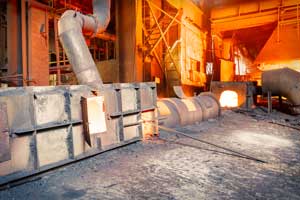Issues with Some Views on China's Rise

This is the first post in a three-part series on the rise of China as an industrial powerhouse.
China’s industrial revolution started 35 years ago, which is a short time for a nation to go from impoverished to industrial powerhouse. How is this possible? The first post in this series will explore some of the explanations and why they don’t seem to hold.
In an article titled "China's Rapid Rise: From Backward Agrarian Society to Industrial Powerhouse in Just 35 Years," Assistant Vice President and Economist Yi Wen asked: “How could a nation with 1.4 billion people transform itself relatively suddenly from a vastly impoverished agricultural land into a formidable industrial powerhouse when so many tiny nations have been unable to do so despite their more favorable social-economic conditions?”
China’s Rise as an Industrial Power
Wen noted that China’s per capita income was only one-third of that of sub-Sahara Africa 35 years ago. Today, it produces large amounts, or even most, of the world’s supply of several industrial goods:
- Crude steel (50 percent of the global supply)
- Cement (60 percent of the world’s production)
- Coal (50 percent of the world’s production)
- Vehicles (more than 25 percent of the global supply)
Factors behind China’s Rise?
Wen examined two of the most popular and provocative views regarding China’s rise as an industrial power: a government-engineered bubble and simple destiny.
Wen noted that those who see China’s growth as a bubble point to the nation’s lack of democracy, human rights, freedom of speech and several other things that Western nations possess that have been crucial for their prosperity. He wrote that those who see China’s rise as destiny note its historical position as one of the world’s richest nations from at least 200 B.C. to 1800. This view argues that it was only a matter of time before China reclaimed its perch.
Viewpoints Lack Economic Analysis
Wen noted that neither view is backed by serious economic analysis. Regarding the bubble view, he wrote: “How could a nation with all those adverse elements for business and innovation be able to grow at a double-digit annual rate for several decades and transform itself in such a short time from an impoverished agricultural economy into a formidable manufacturing powerhouse?”
Regarding the destiny view, he wrote: “If culture or ancient civilization is the explanation, then why aren’t Egyptian, Greek or Ottoman empires bursting onto the world’s stage?”
While those explanations don’t seem to hold, Wen noted that China seems to have gotten the recipe for success down after several failed attempts at industrialization. The next post in this series will explore those failed attempts. The final post will explore the steps China has taken to become an industrial power.
Follow the Series
Citation
ldquoIssues with Some Views on China's Rise,rdquo St. Louis Fed On the Economy, June 13, 2016.
This blog offers commentary, analysis and data from our economists and experts. Views expressed are not necessarily those of the St. Louis Fed or Federal Reserve System.
Email Us
All other blog-related questions

